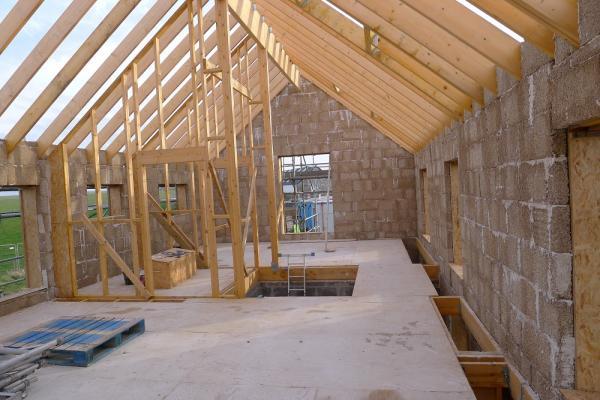Eco insulation is one of the many applications for industrial hemp (Cannabis sativa), a plant that is gaining interest as an alternative to oilseed rape in a rotation. The cultivation and opportunities of hemp, including its use in the green building material ‘hempcrete’, are to be discussed at the Agri-TechE event ‘From Farmer to Pharma – and Beyond – with Medicinal Cannabis and Industrial Hemp’.
One of the speakers at the event, Chloe Lockhart of the NFU, says: “With the diminishing area of oilseed rape being grown, UK farmers have a void in rotations to fill. With many trying new or traditionally 'niche' crops, I believe there is a huge opportunity for hemp to fill some of these acres.”
Cannabis Sativa is a hardy plant that is able to survive the poorest soil and almost any climate, and it also requires little in the way of chemical inputs. Industrial hemp is virtually free of THC (Tetra-Hydro-Cannabinol, a Class B controlled substance that is highly regulated in most EU member states) and therefore has no psychotropic effect.
The chopped up woody core of the hemp plant is called shiv or hurd, which becomes hempcrete when mixed with the traditional building material lime. Hempcrete is an insulation material that also stores heat in its fabric and releases it slowly; by regulating temperature fluctuations, it keeps a house warmer on cold days and cooler on hot days.
Alex Sparrow, founder of UK Hempcrete, has been building with hempcrete for 10 years and co-wrote The Hempcrete Book; the definitive book on this green building material.
“The properties of both the lime and hemp shiv means hempcrete is excellent at regulating heat and humidity in the home,” Alex explains, “it mimics the properties of traditional buildings which allow moisture to pass through the wall rather than trying to prevent it.”
“Hempcrete has an excellent thermal performance as it has both a low thermal conductivity and a high thermal mass, but it is also hygroscopic, absorbing moisture at times of high humidity, and releasing it when the air is dry.”
Hemp’s green credentials go further: the very tall stems have a very dense cellulose structure, enabling it to absorb plenty of CO2 during growth. As a carbon negative material hempcete is helping to reduce the carbon footprint of the construction industry.
Alex has seen increasing interest in hempcrete and has moved into consultancy to help design, source and train others to use the material to its potential.
“Demand has increased massively over recent years and more commercial projects are seeking to use hempcrete,” Alex says. “We will need to increase national hemp supply to meet construction industry demand over the next decades.”
The company currently sources most of its shiv from farms in Yorkshire, who grow the hemp and process it themselves using a decortication machine that separates the tough, woody interior of the hemp plant from the soft, fibrous exterior. The shiv is used for hempcrete or animal bedding, and the fibres have many industrial applications e.g. in the automotive, paper and textile industries.
The rest of the crop also has value: the leaves and buds contain beneficial substances including the valuable CBD (cannabidiol) extract. However, although CBD is a legal health supplement in the UK, to grow the crop needs a special licence granted by the Drugs and Firearms Licencing Unit (DFLU).
Chloe explains that complexities over licensing are restricting the cultivation of Cannabis sativa in the UK: “The licencing regime is complex, and if you are growing hemp for the first time, potentially on a small area to see how it fits with your system, this can be off-putting and acts as a significant barrier to uptake.”
However, change is coming and there will be many advantages for those gaining early experience of this valuable crop.
Alex explains that nearly all parts of the hemp plant can be used for construction; the shiv for Hempcrete; the fibre in insulation and dust in specialist plasters.
“There’s definitely a drive to commercialise this as a material – at the start it was only used on one-off residential and commercial buildings, but we’re seeing now more and more organisations scaling up to a commercial size for larger developments.”
Alex will be joining Chloe together with farmers and experts in the regulatory environment to discuss the opportunities for this ‘wonder crop’ at the Agri-TechE event ‘From Farmer to Pharma – and Beyond – with Medicinal Cannabis and Industrial Hemp’ on 12th May @ 9:50 am - 4:30 pm.
